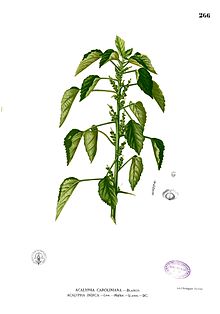Melva Louisa
Medical Journal of Indonesia, v. 22, n. 3, p.127-8, 2013
The search for new molecules nowadays, has taken a slightly different route of non-genomic mechanism, where sciences of ethnopharmacology are being used to lead many researchers towards different resources and classes of compounds.1, 2
In early 1990s, many pharmaceutical companies focused their research on drug discovery on high through put screening to generate and identify new drug candidates. However, the efforts had not resulted in a satisfactory return. Many researchers are therefore turning their heads back to the medicinal plant resources as the source of new lead compounds.3
The popularity of identifying new lead compounds from medicinal plants is simply due to the abundance and matchless source of novel drug leads to inspire synthesis of new compounds.3 Researchers often use the approach of ethnopharmacology, which essentially depends on empirical experiences related to the use of plants for the discovery of biologically active new chemical entity (NCE). New compound research based on ethnopharmacology is considered an effective approach in the discovery of novel chemical entities with potential as drug leads.4 This approach usage history has resulted in some success e.g. Andrographis paniculata with andrographolide as main isolated compound, or berberine from Berberis aristata.5 The 19th century marked the isolation of numerous compounds used as drugs, namely, morphine (Papaver somniferum), atropine (Atropa belladonna), caffeine (Coffea arabica), cocaine (Erytrhoxylum coca), Ephedrine (Ephedra sp.) and quinine (Cinchona cordifolia). Afterwards, more bioactive compounds from plants are used widely as medicines.6
Lead compound discovery process from medicinal plants generally involves the testing of extracts of source plants to in vitro target, followed by bioassay-guided fractionation of the active extracts, then will lead to the isolation and purification of pure compounds. Compounds with strong bioactivity in animal models will be used as lead compound in further drug development.7
To date, clinical trials are ongoing on more than 100 natural product derived drugs and hundreds of molecules are in preclinical development stage. Cancer and infections are the predominant areas of natural products derived drug discovery program. Other areas such as neuropharmacology, cardiovascular, gastrointestinal, and metabolic are also covered in many drug development processes.5
Two medicinal plants developed for therapeutics, Acalypha indica Linn. extracts and Garcinia mangostana extracts, are discussed in this journal.8,9 Yolanda, et al8 used Acalypha indica Linn. Root extracts as neuroprotective agents in an in vitro post-hypoxia model. The author suggested that main compound responsible for the activity is acalyphin.8 Some known isolated compounds from Acalypha indica Linn. are tannins, flavonoids, cyanogenic glucosides acalyphin, acalyphamide and some alkaloids.10 Other studies that used Acalypha indica Linn root extracts have also shown this extracts also showed anti-cancer, anti-microbial and anti-fertility activities.11-13
Mangosteen rind extract is studied by Sutono9 for its effect in reducing acne severity in patients with mild and moderate acne vulgaris. The pericarp of mangosteen-fruit has been used extensively as medicinal agent by Southeast Asians for centuries in the treatment of skin infections and wounds. Xanthones isolated from mangosteen pericarp are thought to be the main responsible bioactive compounds.10 Many experimental studies are recently ongoing to prove the efficacy of mangosteen, isolated xanthones or synthetic xanthones in many therapeutic indications including skin diseases.9,14,15
Though many success stories have been provided, but lead compound discovery from plants is not without its disadvantage. Drug discovery and eventual commercialization might lead to undesirable environmental concerns.5 Therefore, chemical synthesis after new lead discovery is something that should be done to address this issue.
Up to date, vast proportion of the available higher plant species have not yet been screened for biologically active compounds. Therefore, drug discovery from plants should remain an essential component in the search for new medicines.1 Efforts are clearly are costly and lengthly undertakings, considerable multidisciplinary collaborations are required to enable researchers to provide new drug candidates in therapeutics.
REFERENCES
1. Gurib-Fakim A. Medicinal plants: Traditions of yesterday and drugs of tomorrow. Mol Aspects Med. 2006;27:1-93.
2. Buenz EJ. Hold on to your memories: How recent findings will impact plant-based drug discovery. J Ethnopharmacol. 2007;114:279-80.
3. Ji HF, Li XJ, Zhang HY. Natural products and drug discovery. EMBO Rep. 2009;10:194-200.
4. Brusotti G, Cesari I, Dentamaro A, Caccialanza G, Massolini G. Isolation and characterization of bioactive compounds from plant resources: The role of analysis in the ethnopharmacological approach. J Pharm Biomed Anal. 2013;S0731-7085(13)00117-9.
5. Katiyar C, Gupta A, Kanjilal S, Katiyar S. Drug discovery from plant sources: An integrated approach. Ayu 2012. 33(1):10-9.
6. Salim AA, Chin YW, Kinghorn AD. Drug discovery from plants. In: Ramawat KG, Merillon JM (eds). Bioactive molecules and medicinal plants. 2008. pg.1-25. ISBN: 978-3-540-75600-3.
7. Cragg GM, Newman DJ. Drug discovery and development from natural products: the way forward. 11th NAPRECA Symposium Book of Proceedings, Antananarivo, Madagascar. p. 56-69.
8. Yolanda S, Andraini T, Kusuma I. Acalypha indica root extract increase post-hypoxic rat hippocampal tissue culture cell viability via phospholipase A2 inhibition. Med J Indones. 2013;22:136-40.
9. Sutono T. Efficacy of Garcinia mangostana L. (mangosteen rind extract) to reduce acne severity. Med J Indones. 2013;22:167-72.
10. Nahrstedt A, Hungeling M, Petereit F. Flavonoids from Acalypha indica. Fitoterapia. 2006;77: 484-6.
11. Sanseera D, Niwatananun W, Liawruangrath B, et al. Antioxidant and anticancer activities from aerial parts of Acalypha indica Linn. Chiang MaiUniv J NatSci. 2012;11:157-68.
12. Abdullah N, Zulkifli KS, Abdullah A, Aziman N, Kamarudin WSSW. Assessment on the antioxidant and antibacterial activities of selected fruit peels. Int J ChemTech Res. 2012; 4:1534-42.
13. Hiremath SP, Rudesh K, Badami S, Patil SB, Patil SR. J Ethnopharmacol. 1999;67:253-8.
14. Pedraza-Chaverri J, Cardenas-Rodriguez N, Orozco-Ibarra M, Perez-Rojas JM. Medicinal properties of mangosteen (Garcinia mangostana). Food ChemToxicol. 2008;46:3227-9.
15. Wang JJ, Shi QH, Zhang W, Sanderson BJS. Anti-skin cancer properties of phenolic-rich extract from the pericarp of mangosteen (Garcinia mangostana Linn.). Food ChemToxicol. 2012;50:3004-13.
Melva Louisa1,2
1Deputy Editor of Medical Journal of Indonesia
2Department of Pharmacology, Faculty of Medicine, Universitas Indonesia, Jakarta, Indonesia
doi: 10.13181/mji.v22.i3.578


Nenhum comentário:
Postar um comentário